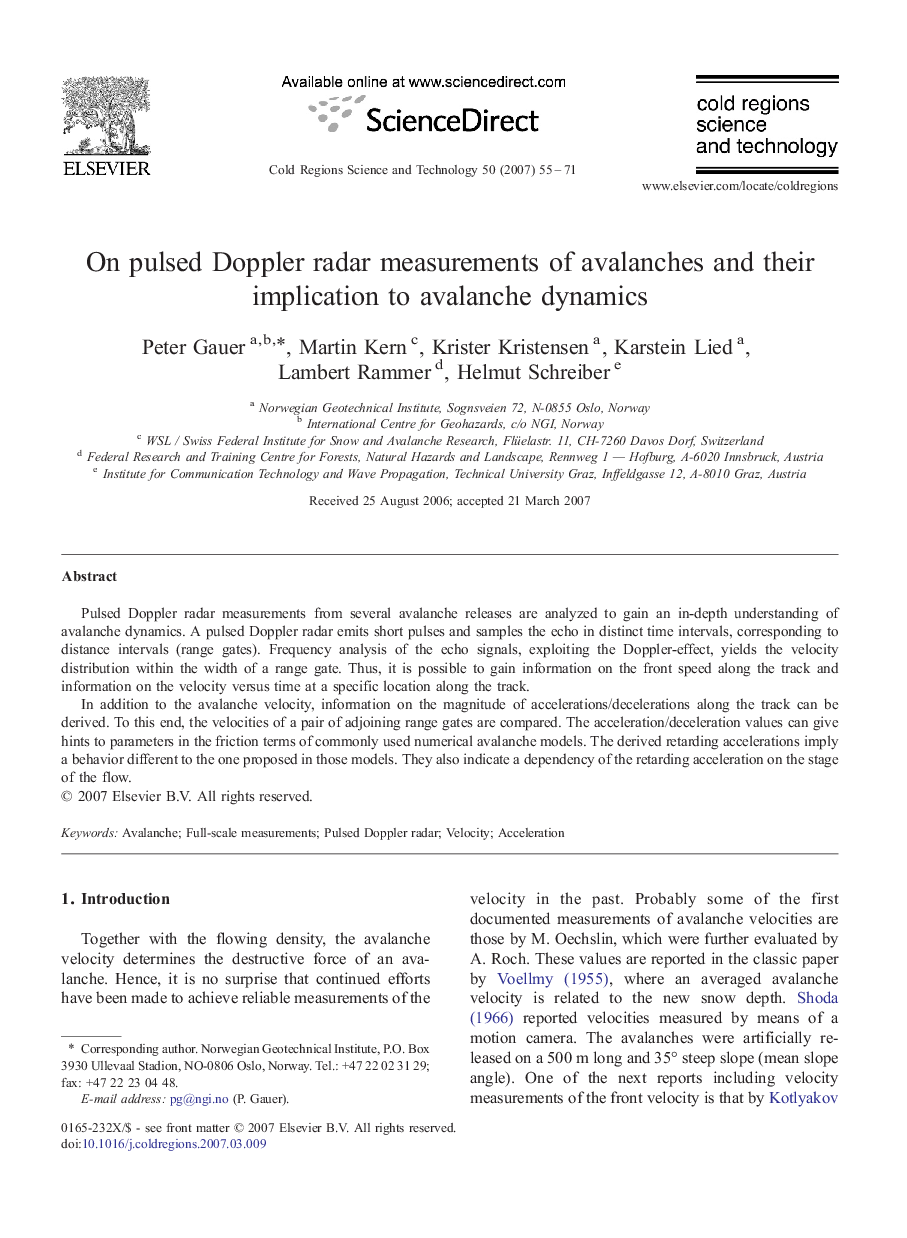| Article ID | Journal | Published Year | Pages | File Type |
|---|---|---|---|---|
| 4676587 | Cold Regions Science and Technology | 2007 | 17 Pages |
Pulsed Doppler radar measurements from several avalanche releases are analyzed to gain an in-depth understanding of avalanche dynamics. A pulsed Doppler radar emits short pulses and samples the echo in distinct time intervals, corresponding to distance intervals (range gates). Frequency analysis of the echo signals, exploiting the Doppler-effect, yields the velocity distribution within the width of a range gate. Thus, it is possible to gain information on the front speed along the track and information on the velocity versus time at a specific location along the track.In addition to the avalanche velocity, information on the magnitude of accelerations/decelerations along the track can be derived. To this end, the velocities of a pair of adjoining range gates are compared. The acceleration/deceleration values can give hints to parameters in the friction terms of commonly used numerical avalanche models. The derived retarding accelerations imply a behavior different to the one proposed in those models. They also indicate a dependency of the retarding acceleration on the stage of the flow.
